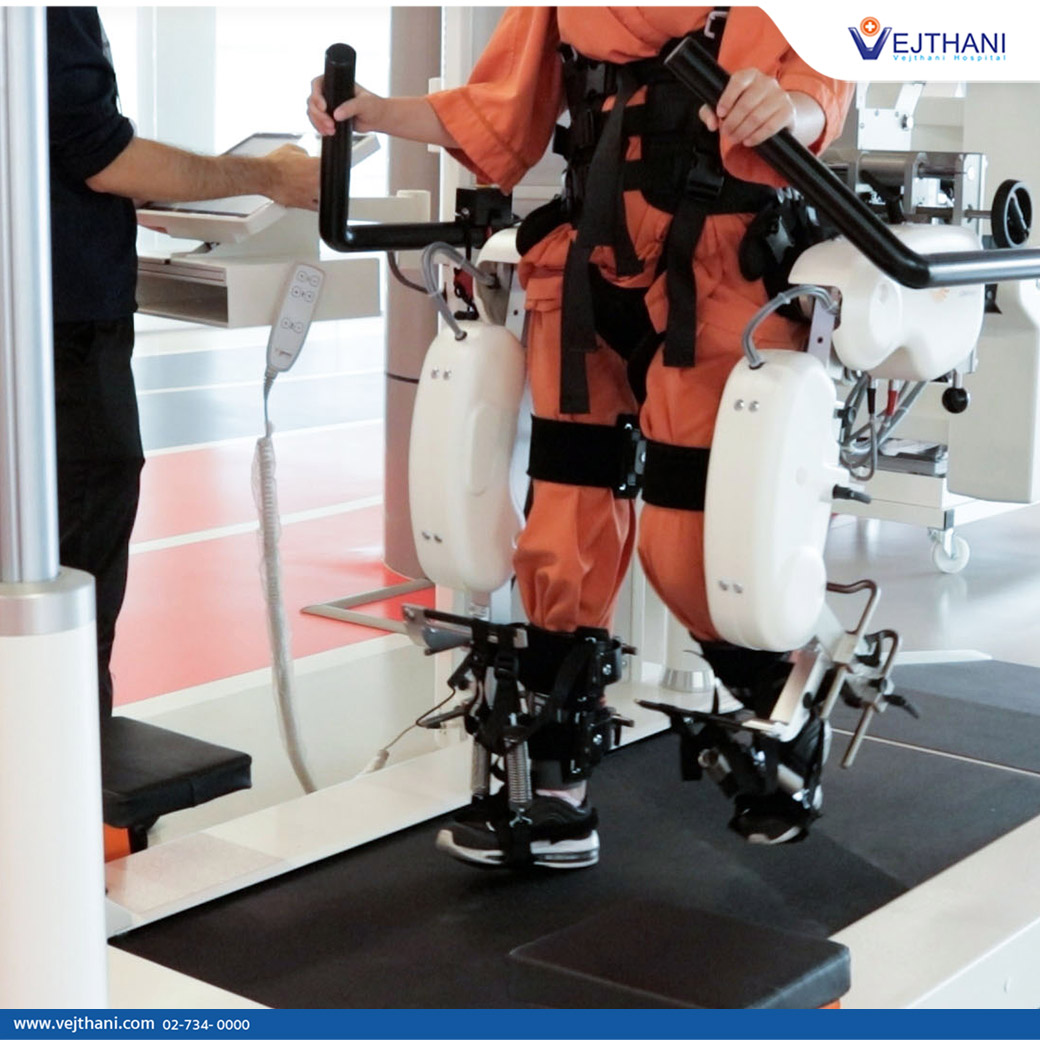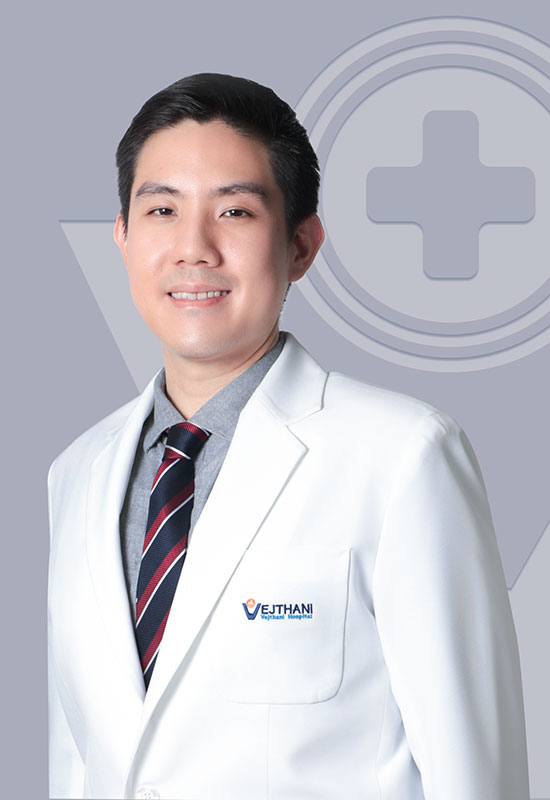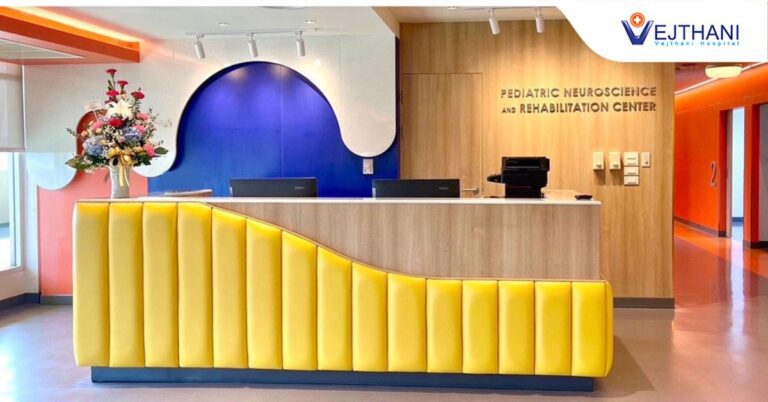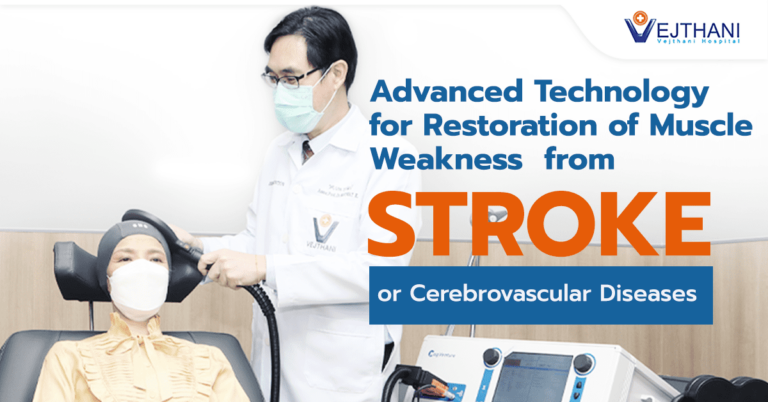Robotic-assisted gait training provides effective stroke rehabilitation. It can restore a patient’s mobility and quality of life.
Ischemic strokes are common among Thais. The disease is divided into two types. Thrombotic strokes are caused by a buildup of fats and cholesterol in the arteries that leads to a narrowing or clotting of the arteries and eventually decreases blood flow. An embolic stroke occurs when the blood clot breaks off from any part of the body and travels to the brain and blocks an artery. It can also be caused by the enlargement of the blood clot that leads to a complete blockage of the brain artery.
A cerebral aneurysm develops from a weak blood vessel paired with high blood pressure. It causes a bulge in the arterial wall that ends up in a rupture in time or there is also a possibility it can be caused by deposits of fats found in the arteries that leads to a burst of blood vessels.
Dr. Pheeravut Tantisuvanitchkul, a specialist in physical medicine and rehabilitation at Vejthani Hospital, explains that cerebrovascular disease causes patients to have an interruption of blood flow to the brain and leads to a loss of neurological function. For instance, numbness or weakness of legs and arms on one side of the body or face, slurred speech, facial droop, dysphagia or trouble swallowing, abrupt headache or dizziness, blurred vision, partial or complete loss of vision, sudden blindness in one eye and loss of balance are some of the symptoms found in stroke patients. If any abnormality arises, patients must seek immediate medical attention because stroke is a severe and life-threatening disease that may lead to paresis, paralysis, or loss of mobility.
Many stroke patients who have overcome a critical time but are still paralyzed, need a complete restoration for the first 3-6 months. This is considered as the Golden period that will allow the patients to get back to their normal life. Thus, it is crucial for cerebrovascular disease patients to receive accurate, proper, and timely recovery. This will enable them to return to their life as normal as possible in terms of both physical and mental wellbeing”, said Dr. Pheeravut.
The Advanced Rehabilitation Center at Vejthani Hospital has introduced a new technology used for stroke rehabilitation. The technology uses robotic-assisted gait training with patients who suffer from cerebrovascular disease to enhance the effectiveness of their stroke rehabilitation.
The equipment consists of Lokomat, a robotic-assisted gait training device, designed to restore patients with balance and walking disorders from cerebrovascular disease. The robot provides joint support around the knees and hips that imitates the natural movement of these areas. A variety of game training is also included in the stroke rehabilitation program. This will allow them to notice the progress they are making during the training and encourage them to continue with the stroke rehabilitation program.
The C-Mill functional gait and balance training machine is a robot that helps to restore impaired gait in a realistic virtual environment, such as walking in various environments and avoiding obstacles to prepare the patients for real situations. The machine also facilitates balance and gait recovery and fixes walking speed by training with a virtual reality-based game in simulated environments that are suitable for each patient. This prevents boredom, reduces pressure and stress during the stroke rehabilitation. In addition, it motivates them to continue with the program to reach their goals. The technique boosts their visuospatial ability and introduces activities that require task-specific skills. It also improves their decision-making executive function skills and increases their attention span for complex tasks.
KEEOGO is a smart powered orthosis walking assistance device that allows patients to walk with confidence and reach a farther distance in their stroke rehabilitation program. It enables them to move independently by overcoming limitations in everyday life from balance disorder and muscle weakness or pain. Patients will be able to walk for a longer period and distance. The machine also assists in walking up and down the stairs, walking on uneven grounds, squatting, and getting up from the floor with ease.
The stroke rehabilitation programs are designed by specialists and customized for each patient to suit their different needs. Essentially, the stroke rehabilitation programs are adjusted to fit the patient’s clinical condition during the training. This leads to satisfying treatment results and helps them to return to living a normal life as soon as possible.
- Readers Rating
- Rated 5 stars
5 / 5 ( Reviewers) - Spectacular
- Your Rating


























